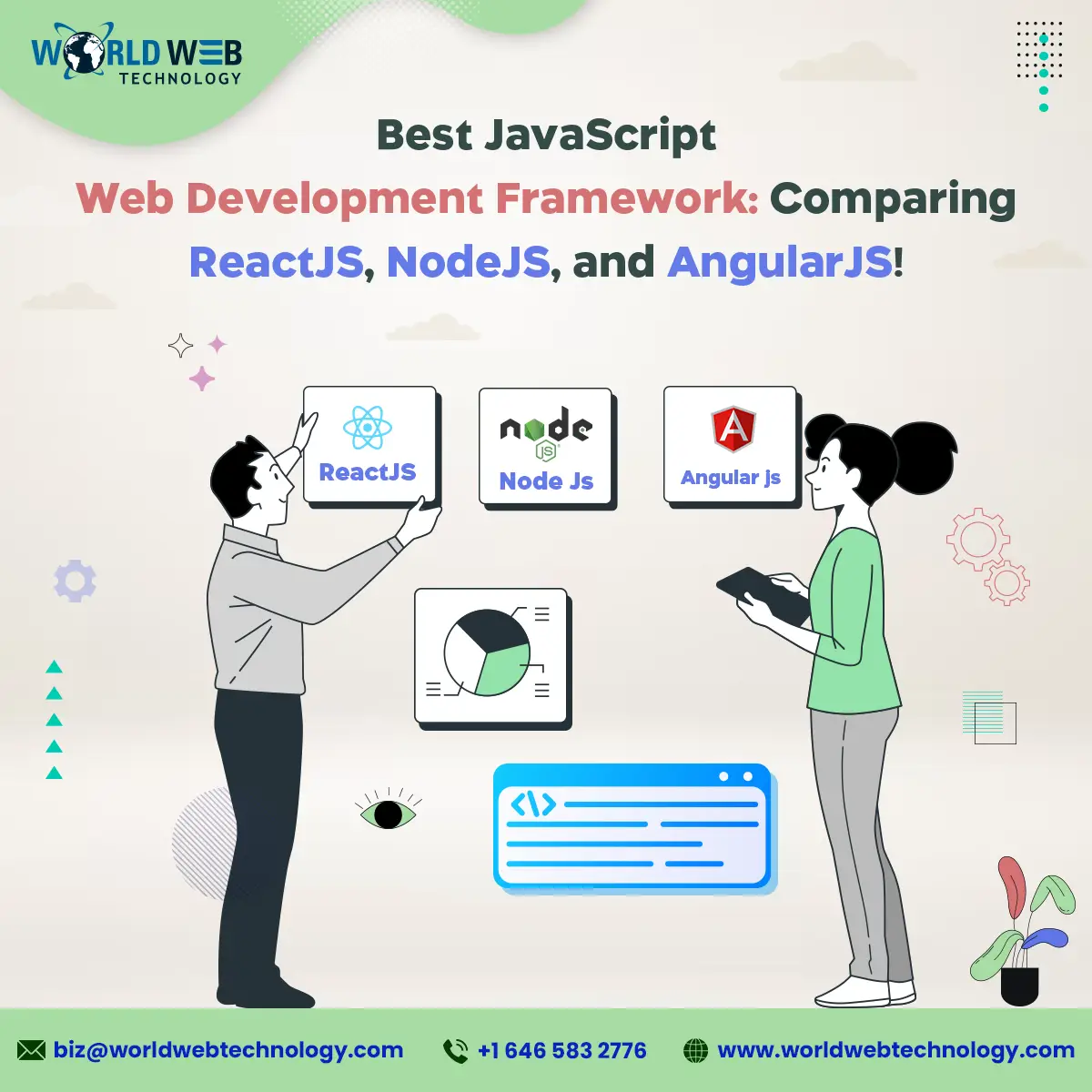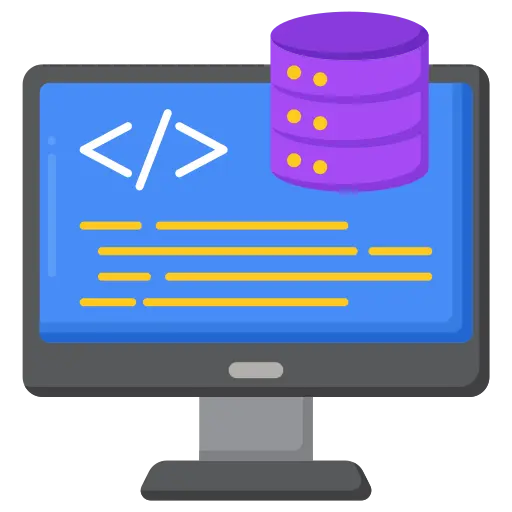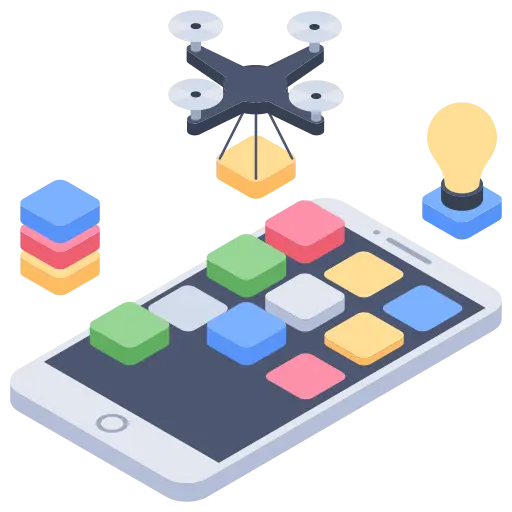Web development and its success primarily depend on the framework that you use. You can say that the app development system is the backbone of your app – it can make or break it. Choosing the correct platform is vital no matter which stage of business you are at. You may be just entering the market or have accomplished a place in the sector; a development platform is essential. The most popular framework for front-end web development is the JavaScript framework. In this blog, we shall discuss the three popular JavaScript frameworks (ReactJS vs NodeJS vs AngularJS). We will compare each with the other to provide you with a clear idea of how these platforms can benefit you as a business owner. We will focus on the details of these frameworks.
Why JavaScript for Web Development?
Developers and business owners trust variant platforms globally available in the market; however, JavaScript is an exception. An assemblage of numerous JavaScript code libraries makes the JavaScript framework. They are pre-written codes that allow you to build robust, interactive websites and apps, especially when you hire dedicated developers. Out of the many JavaScript frameworks, AngularJS, ReactJS and NodeJS have recently gained immense popularity. If you are a web development company making mobile apps, one of these should be your top choice.
We are here to help you choose your next web development project using the JavaScript framework (ReactJS vs NodeJS vs AngularJS). Let’s begin with understanding what these three frameworks are.
What is ReactJS?
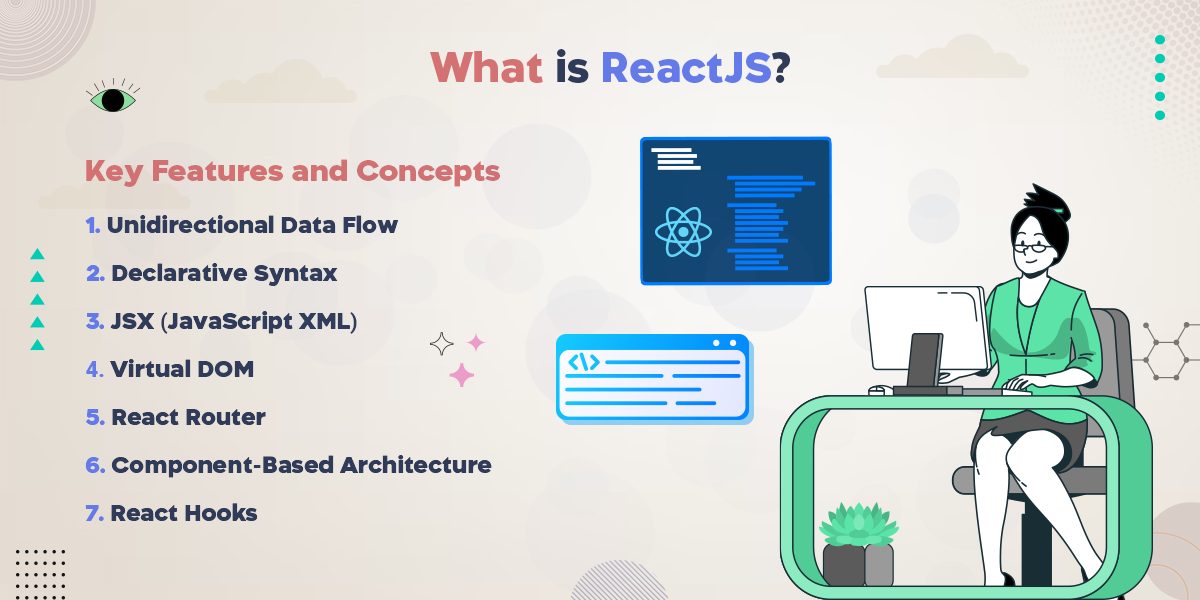
Facebook developed and maintains ReactJS, also known as React. It is a JavaScript library that is open-source and popularly used to construct user interfaces (UIs) for the development of web applications. Popularly, you can create single-page applications, especially where user interactions are dynamic and the UI needs real-time updates.
Key Features and Concepts:
1. Unidirectional Data Flow
ReactJS implements a data flow that is unidirectional. It means that the application data streams in one direction. The unidirectional data flow is all about making professionals understand how this data changes. It also helps you in preventing common issues over time, which are further related to data mutations.
2. Declarative Syntax
ReactJS is known for its declarative syntax. It makes it easier to debug code and understand it. Developers define the UI’s desired state; React then updates its original UI interface to match the desired state.
3. JSX (JavaScript XML)
This JS framework introduces JSX, an extension of syntax that allows developers to write down the HTML elements and components in a syntax similar to XML or HTML. JSX is then transpired into regular JavaScript by tools like Babel.
4. Virtual DOM
It means Document Object Model. ReactJS utilizes virtual DOM to improve the updating efficiency of actual DOM. ReactJS generates a virtual document object model instead of manipulating changes directly. You can work on specific updates and memory using actual DOM. It helps improve performance and provides a smoother user experience.
5. React Router
We recommend React Router for building single-page applications with multiple views. It allows developers to manage the navigation and URLs of their applications.
6. Component-Based Architecture
React follows a component-based architecture. The framework breaks down the UIs into reusable, self-contained components. Each component manages its state and behavior, making building and maintaining complex applications easier.
7. React Hooks
React Hooks allows web development experts to use other features and states of ReactJS in functional components rather than class components. Hooks simplify the reuse of logic and drawbacks in functional components. The React 16.8 version introduced the Hooks feature.
React accompanies other libraries and frameworks for building a complete web application. ReactJS has gained immense popularity and adoption in the web development community. This is due to its flexibility, efficiency, simplified tools and huge libraries built around it.
What is NodeJS?
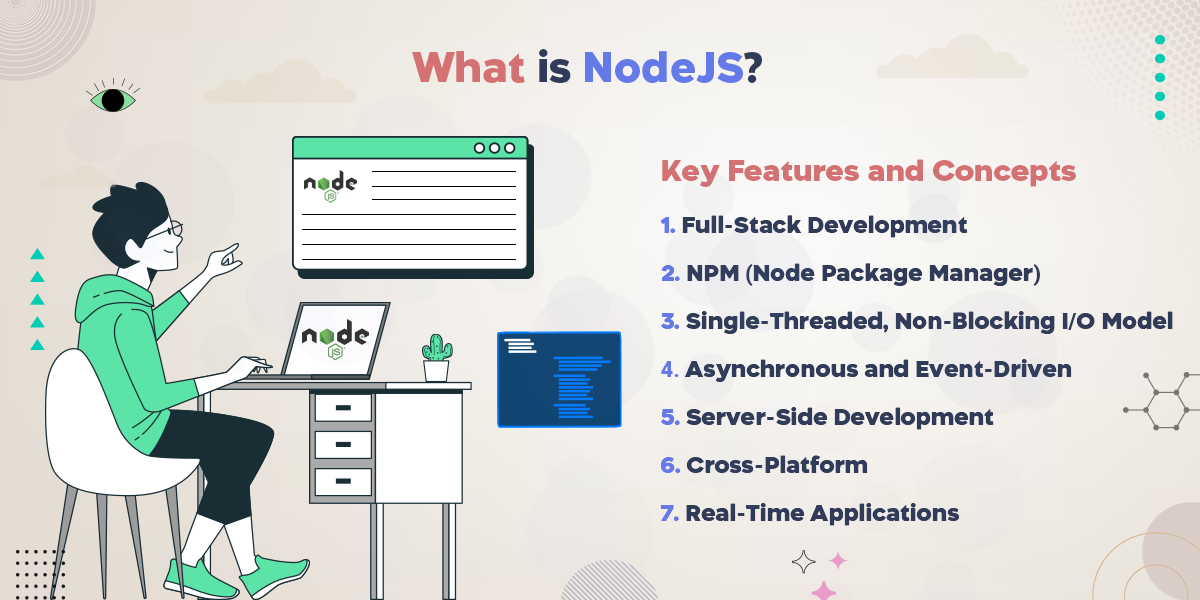
Node.js is an open-source, cross-platform with runtime environment of JavaScript. It allows web developers to operate JavaScript codes outside a web browser. V8 JavaScript runtime operates NodeJS. Node.js enables the development of server-side and networked applications and has become widely popular for building scalable and real-time web applications.
Key Features and Aspects:
1. Full-Stack Development
While web developers prefer Node.js for server-side development, it’s not limited to that role. They can use Node.js for full-stack development by using frameworks like Express.js. Experts use this platform to build and integrate server-side components with front-end development.
2. NPM (Node Package Manager)
Node.js comes with NPM, which allows developers to install, share and manage libraries and packages easily. The NPM ecosystem is rich and diverse. It has many open-source libraries available for various purposes.
3. Single-Threaded, Non-Blocking I/O Model
Although JavaScript is inherently single-threaded; Node.js uses an event loop to handle multiple concurrent connections. NodeJS allows efficient management of I/O operations without creating new threads for each request. It makes it well-suited for handling many concurrent connections.
4. Asynchronous and Event-Driven
One of the core strengths of Node.js is its asynchronous, event-driven architecture. I/O operations like writing or reading files and making a network request are non-blocking. It allows the server to handle many simultaneous connections efficiently without waiting for each operation to complete.
5. Server-Side Development
Web development companies commonly use Node.js for server-side development. It allows developers to build scalable, high-performance server applications. You can serve web pages, handle HTTP requests and create APIs.
6. Cross-Platform
Node.js works on various operating systems, including macOS, Windows, and Linux. This feature makes it a versatile choice for web development on different platforms.
7. Real-Time Applications
Due to its event-driven nature and support for asynchronous operations, Node.js is well-suited for building real-time applications, which include online gaming, collaborative tools and chat applications.
It’s important to note that Node.js is distinctive from other JavaScript frameworks. This framework provides the runtime environment to execute JavaScript on the server side. In contrast, React and Angular focus primarily on building user interfaces on the client side.
What is AngularJS?
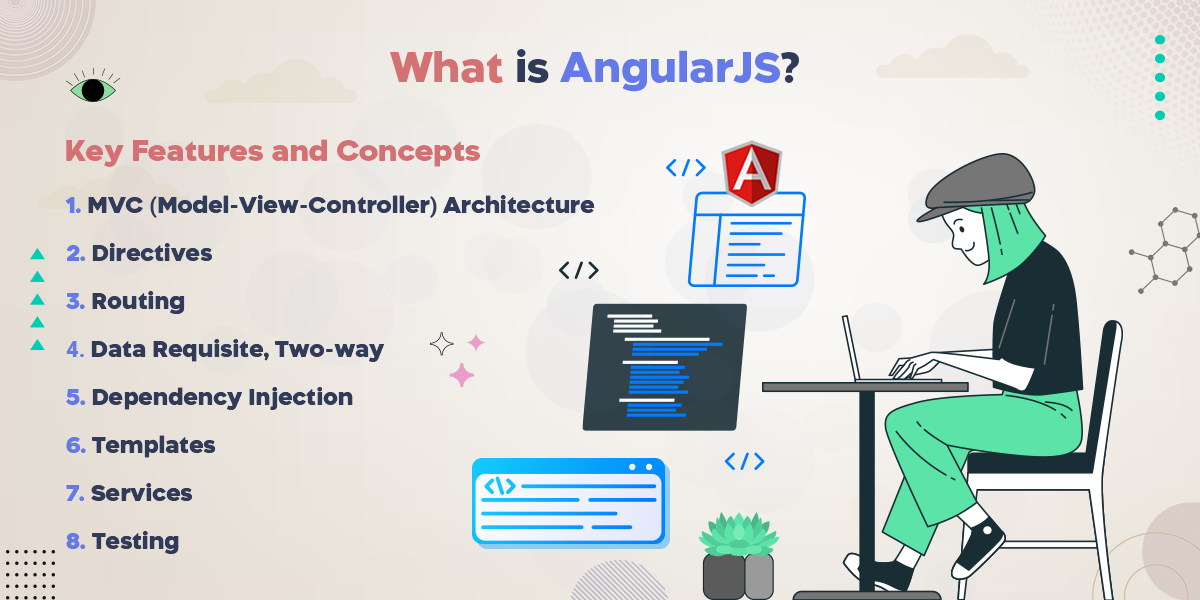
AngularJS is a JavaScript-based open-source web framework; Google primarily maintains it. AngularJS extends HTML with new attributes. It provides a set of tools for building client-side applications, often referred to as “AngularJS applications.” The need for simplified, dynamic, single-page web application development led to AngularJS creation.
Key Features and Concepts:
1. MVC (Model-View-Controller) Architecture
AngularJS encourages using the MVC design pattern. It separates an application into three components: the model (data), the view (UI), and the controller (logic). This separation of concerns makes code easier to manage and maintain.
2. Directives
AngularJS uses directives to extend HTML with new behavior. It uses directives to create personalized HTML elements or attributes. This framework allows professionals to delineate their web applications’ structure and behavior declaratively.
3. Routing
AngularJS offers a clientele routing system. It allows developers to create one-page applications with multiple views and navigation between them without full-page reloads.
4. Data Requisite, Two-way
AngularJS offers a reciprocated data binding system. It means you can spontaneously replicate variations in the information and data in the UI interpretation. This platform bridges the synchronization of data and UI components.
5. Dependency Injection
AngularJS includes a built-in dependency injection system. It makes managing and configuring various components of your application easy. It promotes modularity and testability.
6. Templates
AngularJS uses templates to explain application structures in HTML. Templates can include placeholders for data binding and directives, allowing you to create dynamic views.
7. Services
AngularJS offers a couple of built-in services for everyday tasks, which include HTTP requests, authentication, and routing. You may inject these services into controllers and other components of your application.
8. Testing
AngularJS was designed with testability in mind, making it simpler to write unit tests for your code.
AngularJS is now called Angular framework but is no longer maintained actively. Google has released Angular 2 and its updated versions as a complete rewrite of the framework. It is commonly referred to as just “Angular.” Ask your web development company to use the latest version of Angular. Use other JavaScript frameworks like ReactJS or NodeJS if you’ve hired dedicated developers for your upcoming project.
Unbiased Comparison: ReactJS vs NodeJS vs AngularJS (2025)
Although they are JavaScript technologies, all three frameworks – ReactJS, NodeJS and AngularJS serve distinctive purposes in front-end web development. Let me take you through a detailed comparison of ReactJS vs NodeJS vs AngularJS:
| Features | ReactJS | NodeJS | AngularJS |
| JavaScript Type | Library | Runtime Environment | Framework |
| Purpose | Used to build user interface, create interactive single-page apps | Used to execute server-side JavaScript codes, handle HTTP requests | Used to build dynamic web apps using data binding technology and declarative programming |
| Usage | Front-end web development | Server-side web development, API development | Front-end development for large-scale web apps |
| Scope | Key focus on UI components of web apps | Key focus on JS server-side execution | Key focus on building front-end framework of web apps |
| Architecture | UI component with virtual DOM | I/O architecture that is non-blocking and event-driven | MVC architecture with data binding (2-way) |
| Learning Curve | Easy to learn for JS professionals | Depends on task complexity of web development | Hard to learn due to comprehensive concepts and features |
| Community | Active & large community | Vibrant & large community | Limited and smaller community |
| Ecosystem | Extensive tools and libraries | Rick NPM | Tools, resources and JS libraries |
| More Features | JSX declarative syntax with unidirectional data flow | Asynchronous web development to manage package and dependency | Testable code with dependency injection modules |
Which JavaScript platform should you choose?
As we see, all three JavaScript platforms have distinctive features and working modules. The choice of JS platform ultimately depends on your project’s requirements and your team’s expertise. If you hire dedicated developers in India for your next project, you must discuss their preferred JS platform.
Your choice also depends on the type of web app development that you are looking forward to. If you plan on an interactive user interface, then ReactJS is what you should go with. If you are interested in server-side web development, choose NodeJS. Build a comprehensive, entire framework and front-end web development, then AngularJS is the best for you.
Conclusion!
Now it’s time to wrap up this comparison between the three most popular JavaScript frameworks – ReactJS vs NodeJS vs AngularJS. By now, we are familiar that all of them have their unique strengths and drawbacks; hence, you should make a choice depending on your project’s requirements.
There are two ways of choosing the right option. You either choose the most suitable framework or hire dedicated developers who can provide you with expert, all-in-one solutions. Remember that your choice must depend upon the expert you’ve hired and the requirements of your project.
Frequently Asked Questions
No, these JS platforms serve distinctive purposes. You cannot use them together in a single patch. ReactJS is for front-end web development, AngularJS is a front-end framework, and Node.js is for server-side app development. Web Development Company uses all three together when developing a full-stack JS web application.
You may choose to use Svelte and Vue.js for front-end development. You may use Koa.js, Hapi.js, or Express.js for server-side web development. It is in case you do not wish to use Node.js for web development.
While AngularJS is an outdated JavaScript platform, only a few existing projects use it. App developers popularly use the newer versions – Angular 2 and above. This framework offers improved features that most web developers recommend and adopt for new projects.
Node.js provides an event-driven architecture. It follows the non-block I/O architectural norms that use event loops. This highly effective Node.js architecture allows JS experts to handle multiple asynchronous operations and concurrent connections like a pro.
DOM means Document Object Model. The Virtual DOM represents the actual DOM in ReactJS memory. ReactJS uses this memory efficiently to update only certain sections or patches of the DOM that require changes. Programmers use the process of changes using virtual DOM for performance improvement.
Most Popular Categories
Discover top categories on our blog, featuring WordPress, PHP, eCommerce, and Shopify insights and tutorials.
Featured Insights
Immerse yourself in our passion for sharing the latest industry news, cutting-edge technologies, and insightful articles. Explore the depths of knowledge with us.

May 22, 2025
AI in Customer Support: Transforming Service in the Digital Age!

May 19, 2025



